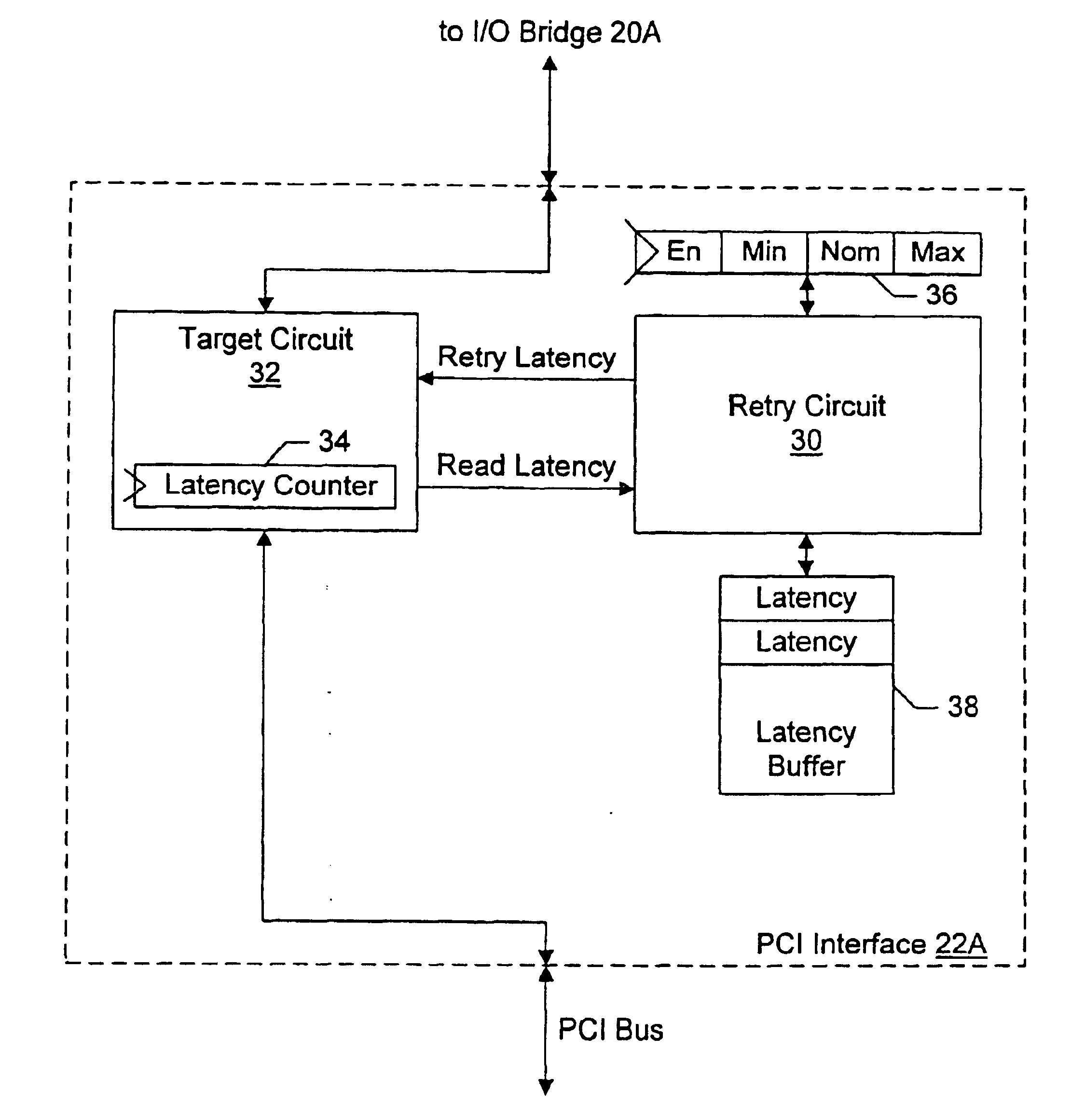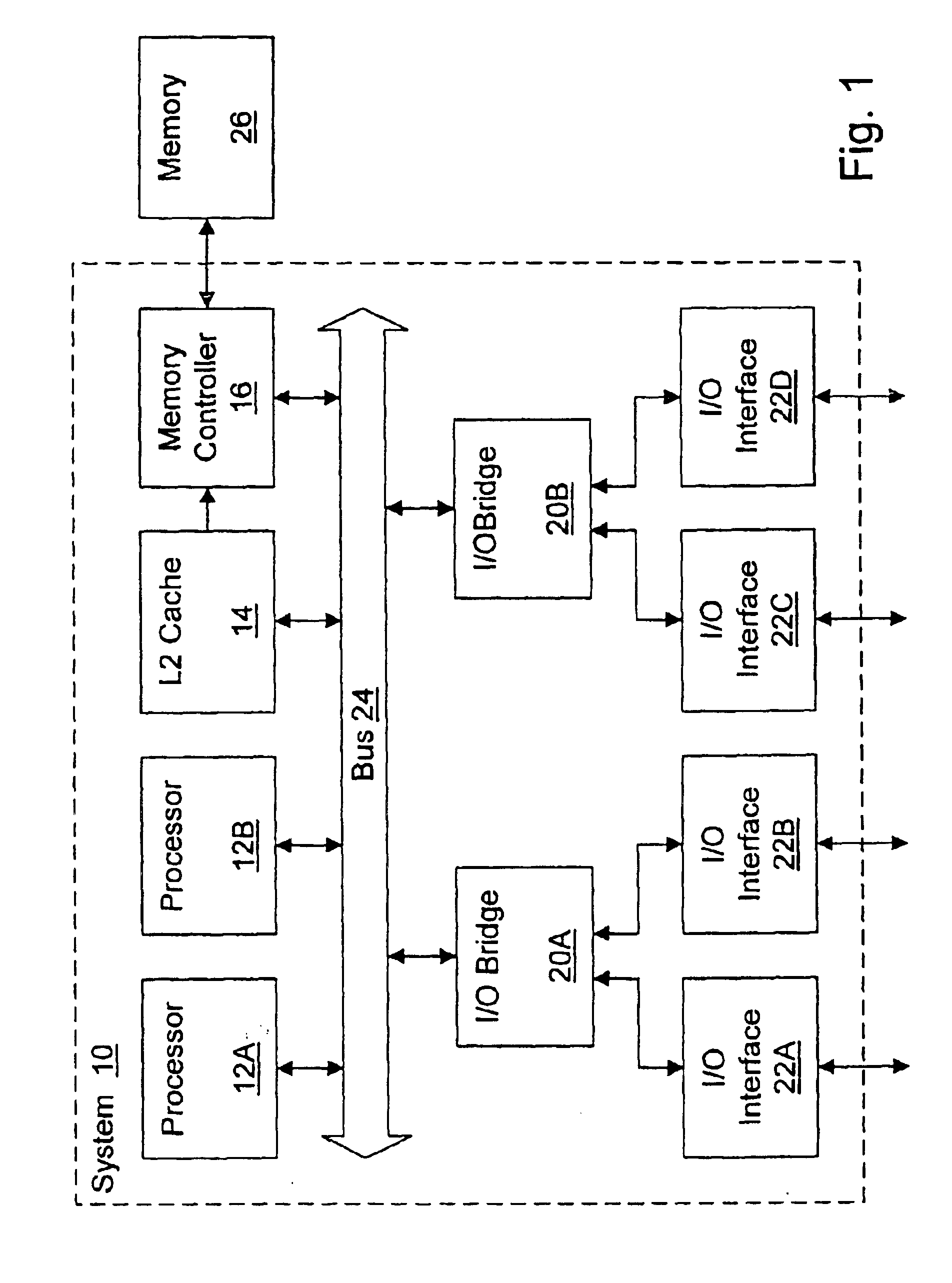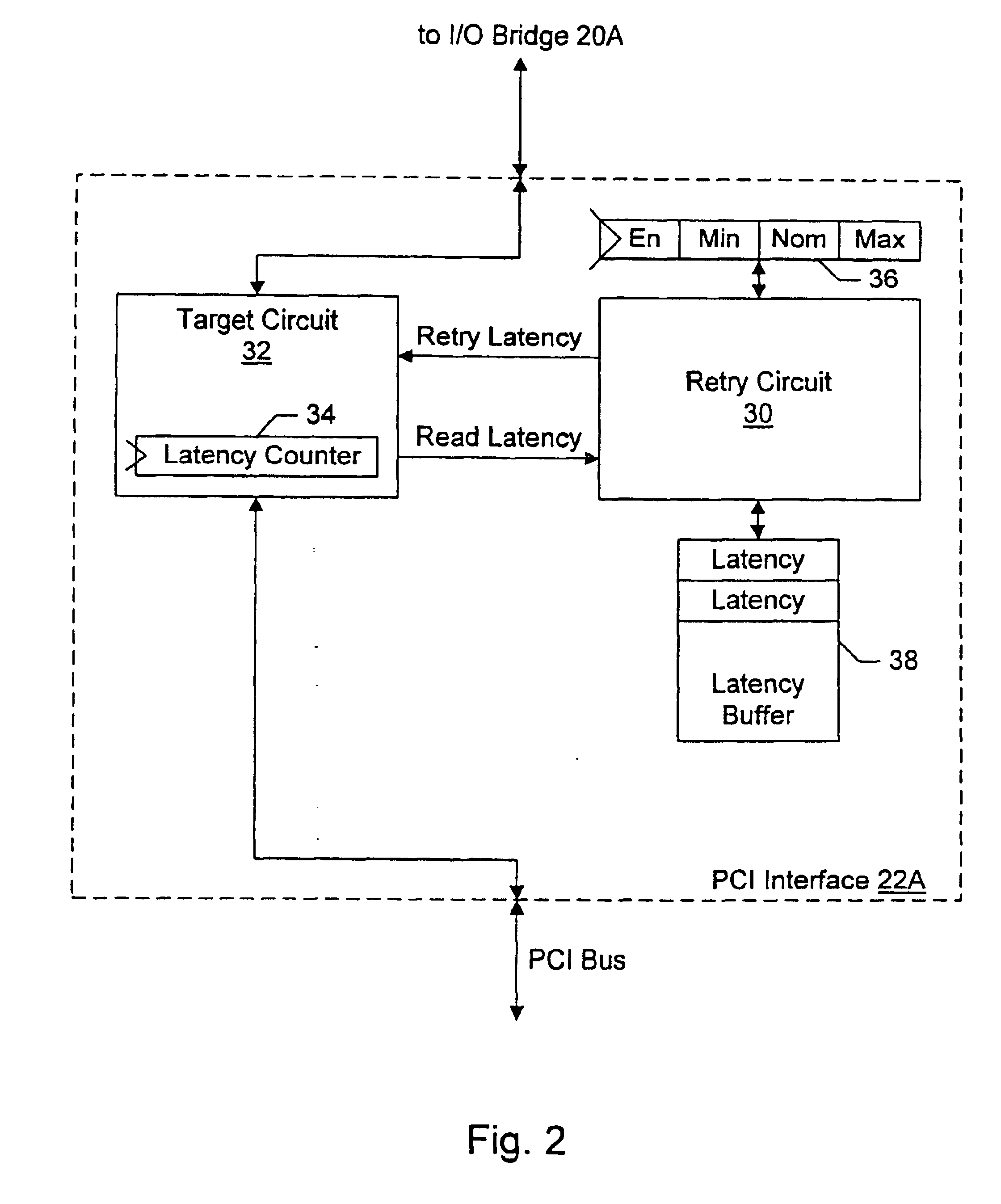Adaptive retry mechanism
a retry mechanism and bus interface technology, applied in the field of bus interfaces, can solve problems such as increasing the latency of a particular transaction, and achieve the effect of efficient bus bandwidth us
- Summary
- Abstract
- Description
- Claims
- Application Information
AI Technical Summary
Benefits of technology
Problems solved by technology
Method used
Image
Examples
Embodiment Construction
System Overview
Turning now to FIG. 1, a block diagram of one embodiment of a system 10 is shown. Other embodiments are possible and contemplated. In the embodiment of FIG. 1, system 10 includes processors 12A-12B, an L2 cache 14, a memory controller 16, a pair of input / output (I / O) bridges 20A-20B, and I / O interfaces 22A-22D. System 10 may include a bus 24 for interconnecting the various components of system 10. As illustrated in FIG. 1, each of processors 12A-12B, L2 cache 14, memory controller 16, and I / O bridges 20A-20B are coupled to bus 24. Thus, each of processors 12A-12B, L2 cache 14, memory controller 16, and I / O bridges 20A-20B may be an agent on bus 24 for the illustrated embodiment. I / O bridge 20A is coupled to I / O interfaces 22A-22B, and I / O bridge 20B is coupled to I / O interfaces 22C-22D. L2 cache 14 is coupled to memory controller 16, which is further coupled to a memory 26.
Processors 12A-12B may be designed to any instruction set architecture, and may execute programs...
PUM
 Login to View More
Login to View More Abstract
Description
Claims
Application Information
 Login to View More
Login to View More - R&D
- Intellectual Property
- Life Sciences
- Materials
- Tech Scout
- Unparalleled Data Quality
- Higher Quality Content
- 60% Fewer Hallucinations
Browse by: Latest US Patents, China's latest patents, Technical Efficacy Thesaurus, Application Domain, Technology Topic, Popular Technical Reports.
© 2025 PatSnap. All rights reserved.Legal|Privacy policy|Modern Slavery Act Transparency Statement|Sitemap|About US| Contact US: help@patsnap.com



